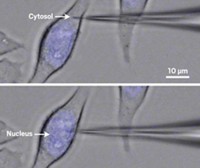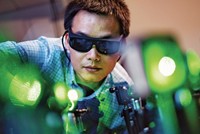Advertisement
Grab your lab coat. Let's get started
Welcome!
Welcome!
Create an account below to get 6 C&EN articles per month, receive newsletters and more - all free.
It seems this is your first time logging in online. Please enter the following information to continue.
As an ACS member you automatically get access to this site. All we need is few more details to create your reading experience.
Not you? Sign in with a different account.
Not you? Sign in with a different account.
ERROR 1
ERROR 1
ERROR 2
ERROR 2
ERROR 2
ERROR 2
ERROR 2
Password and Confirm password must match.
If you have an ACS member number, please enter it here so we can link this account to your membership. (optional)
ERROR 2
ACS values your privacy. By submitting your information, you are gaining access to C&EN and subscribing to our weekly newsletter. We use the information you provide to make your reading experience better, and we will never sell your data to third party members.
Analytical Chemistry
Metallic Nanoflower Does Triple Duty
Analytical Chemistry: Nanostructures target cancer cells, grab small molecules inside, and then enable mass spectrometry of those molecules
by Melissae Fellet
December 21, 2012

New metallic nanoflowers could help researchers monitor molecular variations inside cancer cells. These nanoparticles enter targeted cells, grab small molecules inside the cells, and present those molecules for analysis by mass spectrometry (ACS Nano, DOI: 10.1021/nn304458m).
Chemists already use metallic nanoparticles to seek out certain cells they want to image or deliver drugs to. They do so by attaching targeting molecules like antibodies to the nanostructure. By building each nanoparticle from two metals, researchers can also tailor their chemical and physical properties. A nanostructure made of gold and iron oxide, for example, responds to light and magnetic fields.
Analytical chemists have also used nanoparticles in a technique called laser desorption ionization mass spectrometry (LDI-MS). Molecules on the surface of a metallic nanoparticle ionize before others in a mixture, simplifying measurements in a complex sample.
Now Weihong Tan at the University of Florida and his colleagues have built a metallic nanostructure that can both target certain cells and enable LDI-MS analysis of molecules within the cells. On Tan’s particles, single strands of DNA called aptamers help the particles both identify cancer cells and retrieve molecules inside the cells.
Tan’s nanoparticles form flowerlike shapes with manganese oxide petals surrounding a central gold nanoparticle. The researchers covered the petals with an aptamer that binds to a protein on the surface of human leukemia cells. Then, on the central gold nanoparticle, they attached an aptamer that grabs adenosine triphosphate (ATP), a molecule that fuels molecular machines and enzymes inside cells. The researchers controlled where the two aptamer types landed on the nanoflowers by using different chemical handles at the ends of each aptamer type.
The researchers added the nanoflowers to leukemia cells in a tube. The researchers used fluorescence microscopy to check that the cells had pulled the particles inside, where the nanostructures captured ATP. Then the researchers burst open the cells and retrieved the nanoflowers by centrifuging the mixture. Performing LDI-MS on the nanostructures produced ions with the molecular mass of ATP.
Tan says this nanoflower-assisted analysis might find use in measuring how ATP levels vary among different types of cancer. Such knowledge could help scientists learn about the mechanisms of cancer, he says.
John McLean, a mass spectroscopist at Vanderbilt University, thinks the potential applications are “tantalizing.” Metabolite levels change quickly in cells, he says, and this method might provide a snapshot of those levels, providing sharper time resolution than other methods. But first the researchers need to ensure the amount of ATP measured by LDI-MS reflects its concentration inside the cells, McLean adds.





Join the conversation
Contact the reporter
Submit a Letter to the Editor for publication
Engage with us on Twitter